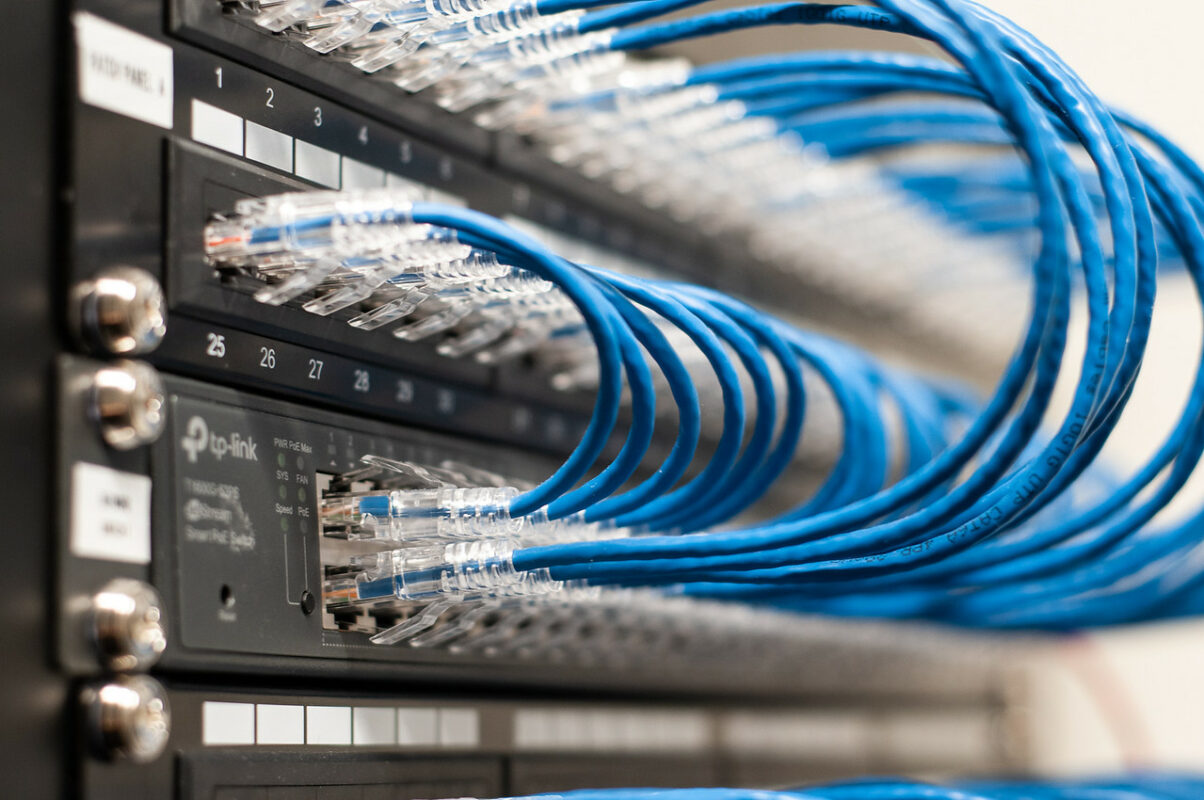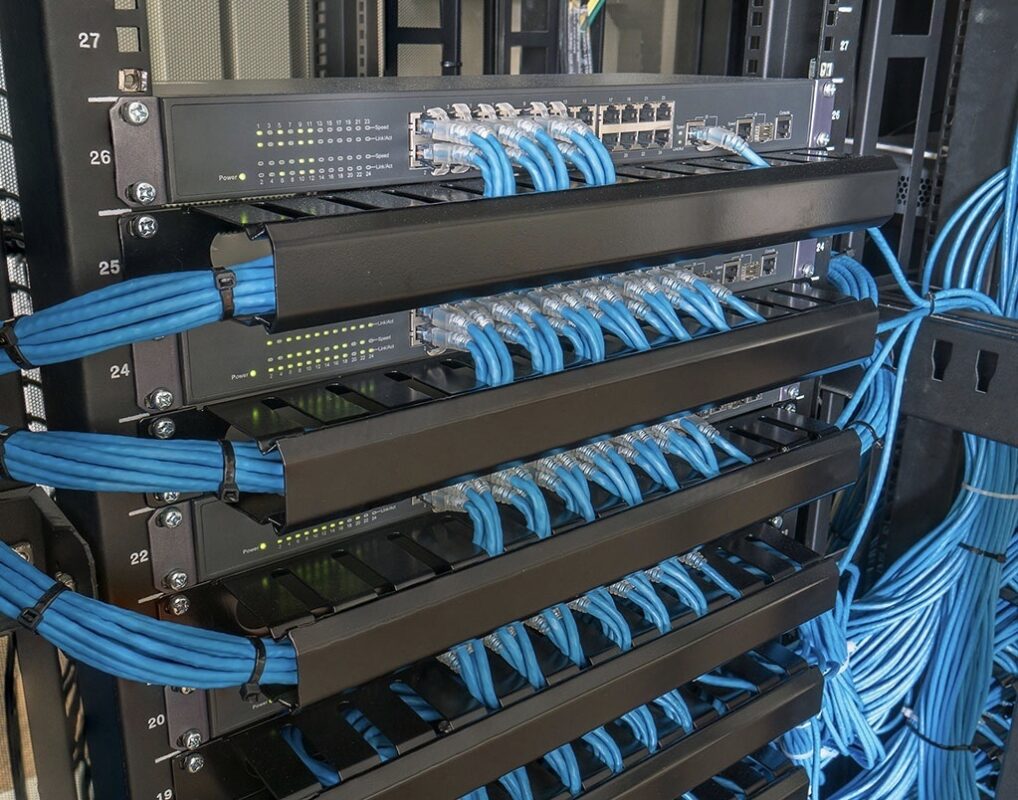What are the benefits of Structured Cabling for Businesses? The benefits of structured cabling are numerous, and cabling makes […]
The benefits of structured cabling are numerous, cabling is part of the existing set of IT infrastructure in companies that enables the transmission of data and signals between the various systems installed. Structured cabling allows computers and server to communicate, receives, and distributes internet signal, the IP PBX center depends on structured cabling to complete connections, and the wifi network (wireless) only works if the routers are connected to the server via cable.
Hundreds of articles and theses are written every year addressing the importance of structured cabling, comparing the evolution of the system since the turn of the century and what is expected of this IT infrastructure for the next 10 years.
The fact is that the IT infrastructure today is undoubtedly the backbone of any company, from the simplest with just a PC and a wifi router, to large offices and industries.
Benefits of Structured Cabling
Project and investment sustainability
Undoubtedly, the investment in structured cabling and the certification of networks guarantee the company the ideal working conditions, offering access to wide banking, communication, and conditions for the expansion of offices or industrial parks. Constant changes in the market require the company to adopt scalable technologies that will adapt according to the results plan. The more dynamic the data network, the risk of becoming obsolete decreases.
Reduced downtime (downtime)
One of the variables that never leaves risk planning is the possibility of human error, in addition to the malfunction of components, cables, or connectors that can stop a company or part of it. In a well-structured data network, it allows the quick diagnosis and resolution of the problem, thus the company greatly reduces downtime, avoiding
Economic viability
Since we talk about cost reduction with the reduction of downtime for companies, structured cabling also becomes economically viable precisely due to this system’s ability to easily adapt to the needs of companies and maintain the workflow. The increase in productivity results in an increase in the company’s results in the segment in which it operates. Therefore, structured cabling, and data network are no costs for the company, they are highly profitable investments.
We list only 3 of the most important factors related to structured cabling in companies, there are many other factors that can even provide the company with conditions to become more competitive in its business.
Keep following our publications and understand in a simple and direct way how IT structures work.
Structured cabling and network infrastructure design
Structured cabling design is the backbone of the IT infrastructure and should focus on reliability and security. Another important factor for the structured cabling and infrastructure project is the professional attitude and transparency with the costs on the part of the company that implements the project.
Understand Structured Cabling Design
Carrying out a cabling project is much more complex than you might think. There are several norms, standards and care that are fundamental to ensure the success of the structured cabling project, such as:
- better management,
- Flexibility in changes,
- Durability (25 years warranty),
- Maintenance speed
- Return on investment when it comes to technology.
That is, all applications and resources are centralized in a single infrastructure.
Far beyond the cost of cable
Definitely, the cabling project goes far beyond the cable price. Designing a data network is not just pointing out the type of material, the number of points, and the place where the cabling must go. To develop the structured cabling project, it is necessary to consider different norms, standards, and, mainly, the customer’s need, in addition to the implementation environment.
When looking for a company specializing in structured cabling, it is important to observe the company’s ability to develop a feasible plan that meets current and future demand and that is within the stipulated budget. All scheduled steps must be agreed upon between the parties.
Cabling for Data Center: understand the types of cables and connectors
Data Center Cabling covers many aspects, from electrical cabling to twisted pair cabling and fiber optic cabling. The data center cabling system basically consists of:
- Electric power cabling;
- grounding;
- Twisted pair cabling;
- Fiber optic cabling.
What determines the type of structured cabling in a Data Center is the interface of the equipment used in the project. Another determining factor is the bandwidth required for the type of equipment to be installed.
Data center cabling can be structured or unstructured
Structured cabling for the data center follows predefined connection point patterns and paths. The type of cable to be used in a data center is directly linked to the bandwidth requirements of the system. All network points in a data center, whether twisted pair or fiber optic, undergo specific certification tests to ensure the quality of data transmission.
Structured cabling in a data center is extremely organized and tagged, so it has a longer runtime than usual and has a higher upfront cost, but the return on investment comes with a lower operating costs and a longer life cycle. longer compared to an unstructured cabling design.
Unstructured cabling: point to point
The unstructured cabling system is also known as “point-to-point”. This type of cabling is not standardized and does not use pre-defined connection points or paths.
Unstructured network cabling can lead to data center room heating increasing the cost of electrical energy. Another disadvantage is that system expansion becomes very difficult with a lack of planning for changing the location of cables or even installing new cables.
Unstructured network cabling is unreliable and can cause frequent network outages and prolonged downtime. Unlike structured cabling, unstructured cabling costs less, and is faster to install, but the operating cost will be higher and the maintenance cycle is much longer.
Structured cabling design: the importance of management
The structured cabling project is made up of information about building regulations, industry standards, and safety regulations necessary for carrying out the project. It is a mistake to start installing and distributing cables without observing all the necessary information.
Managers and other people who have no contact with the structured cabling project understand that the data network is just a tangle of cables that run through the company and take internet access to computers. Experience, planning, and management skills are essential for success.
Complexity increases with the size of the structured cabling project, let’s cover important aspects of project management for structured cabling.
Structured cabling design and data collection
Stakeholder participation:
Several sectors of the company and its managers are directly affected by the completion of the structured cabling project:
- IT Department;
- Purchasing department;
- HR Department;
- Project department;
- Building maintenance;
- Workplace safety.
All these sectors and departments must participate in all stages of the project, especially the phase that directly depends on the supervision or approval of each one of them. It is essential that everyone is aware of the deadlines in the schedule and the costs involved.
Project requirements:
Knowledge of all requirements for the execution of the project must be known, especially requirements involving worker safety and material specifications according to the industrial environment. The survey of requirements for the project should be done right at the beginning, technical requirements can directly influence the costs and delivery time of the project. Some questions to ask:
- What licenses are required for the project?
- Is the labor of your own or of a structured cabling outsourced company?
- Are there time restrictions for access to the project site?
- Which installation points require work at height?
Required Documentation:
The required project-related documentation should be taken into account:
- Floor plan of the site updated and approved by Organs competent bodies;
- Elevation drawings;
- Technical specifications;
- Timeline for each phase of the project.
Depending on the project, documents other than the basic ones listed above must be included in the list. Reinforcing the need for the participation of all departments involved in the project so that there are no “surprises” that negatively impact costs and the delivery schedule.
Approval of the structured cabling project scope description:
Approval of a project description document signed by all involved must be done prior to budget approval. This document is important to assist with project progress and avoids confusion and delays in formulating a budget and conducting the project. What should the project description include?
- Project overview or purpose;
- General scope;
- Specific milestones;
- Management processes.
Budget approval:
Approval of a factual and plausible budget is very important for the company and the structured cabling contractor. all parties must review and agree on the final budget before the structured cabling project begins.
Custom structured cabling design
It is possible to acquire structured cabling projects from companies (clients) and companies that provide IT infrastructure services.
TICAMP is a company specializing in the development of low-voltage electrical and structured cabling projects. It serves industries, commercial projects, and homes.
Contact and consult the technical department.












